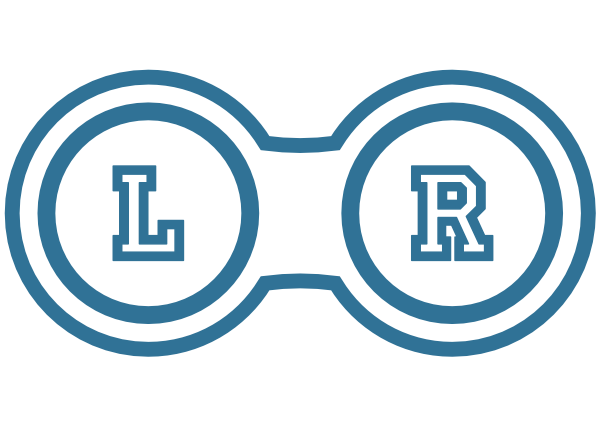If you are like many people in Northern Colorado, LASIK may be an option that you are considering for vision correction. If, in the process of selecting the vision correction, you find yourself wondering about the risk of LASIK, you will be happy to find that the risk of permanent, significant loss of sight is rare. Many times any complications with LASIK can be corrected by the use of laser re-treatment.
Choosing an experienced eye surgeon is the most important step you can take to minimize the risk factors that go along with LASIK. Having an experienced, reputable surgeon who will make sure that you are an excellent candidate for LASIK before the surgery is recommended. If problems do occur during or after the procedure, the surgeon should work closely with you to resolve the issues.
How common are LASIK complications?
Now there is much more confidence in the LASIK procedure because of a high success rate for millions of successful procedures conducted right here in the United States. While gaining increasingly sophisticated technology to be used during the procedure, the vast majority of LASIK outcomes in Fort Collins, Loveland and Greeley are very favorable.
They have been so favorable that the U.S. military has adopted the use of refractive surgery including LASIK to decrease their troop’s dependency on prescription eyewear. In one study where more than 16,000 U.S. Army personnel received refractive surgery from 2000 through 2003, 86% achieved 20/20 or vision (or better!) and 98% achieved 20/40 vision (or better!) (the legal requirement for driving without glasses in most states). The researchers who studied these outcomes concluded in the February 2005 issue of Ophthalmology stated:
“Reports of night vision difficulties, LASIK flap dislocation, and dry eye are infrequent, and do not seem to have a significant negative impact on military operations or individual readiness.”
LASIK complication rates
Many experienced LASIK surgeons are now finding that serious complication rates can be held well below 1% if the surgical candidates go through specific screening and are selected with care. Some people in Northern Colorado may find that they may be eliminated as a surgical candidate, for example, if they are pregnant (many surgeries are unsafe during pregnancy) or have specific health conditions like diabetes that may affect how well their eyes are able to heal after a LASIK surgery. Please discuss any and all health conditions that you have with your eye doctor while you have your LASIK consultation or pre-operative exam for the best outcome for your vision.
Large pupil sizes may also put you at a higher risk for LASIK complications. This is because pupils in dark conditions could expand beyond the area of the eye that had the surgery. Again, please be sure that you discuss any and all concerns about these or other matters with your eye surgeon.
Other considerations about LASIK risks
While the vast majority of LASIK procedures have outcomes that are favorable, there are still the less than 1% of people who will experience some more serious and ongoing vision problems following LASIK. There are no surgical procedures that are risk free!
Some LASIK patients in Loveland, Fort Collins and Greeley who have excellent vision based on eye chart testing can experience irritating side effects. For example, it’s possible a patient may see 20/20 or better with uncorrected vision following a LASIK procedure and yet experience glare or halos around lights at night.
When signing the LASIK consent form before going into surgery, you need to do so with a complete understanding that, in the very best situation, there is always a slight chance something unintended and unexpected could occur. Taking all of this into consideration, most, not all but most problems and be corrected given time.
Common LASIK complications
Here in Fort Collins, Loveland and Greeley we now know that when there are complications after a LASIK surgery, part of the time these complications are due to the hinged flap that’s created in the cornea (the clear front covering of the eye)which is created in the beginning of the LASIK surgery. This flap is lifted before the re-shaping of the underlying cornea with a laser, after which it is replaced to form a natural bandage over the area that was re-shaped.
If during the procedure, the LASIK flap isn’t formed the right way, it might not stick to the surface of the eye correctly. There can also be problem if the flap is cut too thin or too thick. After the flap is returned to the surface of the eye, there may be an issue with it wrinkling. These forms of flap complications may lead to an irregularly-shaped eye surface.
Research now indicates that flap complications happen in from 0.3% to 5.7% of LASIK surgeries, as stated in the April 2006 issue of American Journal of Ophthalmology. Surgeons who have little experience are definitely adding to the higher rates of flap problems. Remember that you can easily improve your odds of avoiding a LASIK complication by choosing to work with a reputable, experienced eye surgeon.
A few of the known issues associated with a LASIK flap complication include:
- Irregular astigmatism may be the outcome produced from a less than smooth corneal surface. Irregular astigmatism may also be the result from a laser correction that wasn’t centered the right way on the eye. As a result, symptoms may include double vision or “ghost images” and in some of these scenarios, the eye may need to be re-treated (also called an “enhancement”).
- Diffuse Lamellar Keratitis (DLK), also nicknamed “Sands of the Sahara,” is the inflammation that may result under the LASIK flap following surgery. Potentially permanent vision loss may happen if there is not prompt treatment with therapies such as antibiotics and topical steroids. In a few cases, DLK can lead to corneal scarring. The flap may also need to be raised and rinsed for the removal of inflammatory cells and to further prevent tissue damage.
- Ectasia (or keratectasia) is the bulging of the cornea which may result from a flap being cut too deeply. When there is too much tissue removed from the cornea during a LASIK surgery, or if the cornea was initially weakened which can be seen in a cornea topography mapping before a LASIK procedure. The resulting distorted eyesight is not likely to be corrected with laser enhancement. Treatment options include rigid contact lenses or corneal implants (Intacs) which might be prescribed to help hold the cornea in the proper place.
- Dry Eye: About 50% of all LASIK patients do report issues with dry eye within six months directly following LASIK, as stated in the April 2006 issue of American Journal of Ophthalmology. As these issues seem to be related to the smaller amount of sensitivity directly after the surgery, if you start to experience an issue with this there are temporary remedies such as artificial tears or prescription dry eye medication is available from your eye surgeon along with oral flaxseed oil capsules. Around six months to a year, the majority of these forms of issues stop after the eye is able to completely heal. Most people who have severe dry eye are usually are eliminated from the LASIK candidates pool and are not approved to have the surgery.
- Significant Undercorrection, Overcorrection, or Regression: An overcorrection or undercorrection of your eyesight means your vision might continue to be slightly blurred from nearsightedness, farsightedness or astigmatism. Regression (which many people experience as they age and their eyesight naturally worsens) is when your eyesight is optimal at first after LASIK, but then begins to deteriorate over time (due to a return of some nearsightedness, for example). These vision issues are easily remedied with an enhancement LASIK surgery.
- Eye Infection or Irritation: Very few people may experience an eye infection, inflammation, or irritation that would require a form of treatment with eye drops containing antibiotics or anti-inflammatory medications such as a steroid.
Vision changes unrelated to LASIK
If you are like many in Northern Colorado who were in their 20s or 30s when you had your LASIK procedure, please understand that your reading vision will most likely change as you near 40 or 50 years old. This eventual change in your vision doesn’t have anything to do with the LASIK surgery you received. This loss of your nearer vision is a natural part of aging called presbyopia. Because of presbyopia, most LASIK patients (like anyone else who sees well without glasses in younger years) will need to use reading glasses after age 40.
For additional information or to schedule an appointment, please call 970-204-4020 or click on the link on the side of the page.






